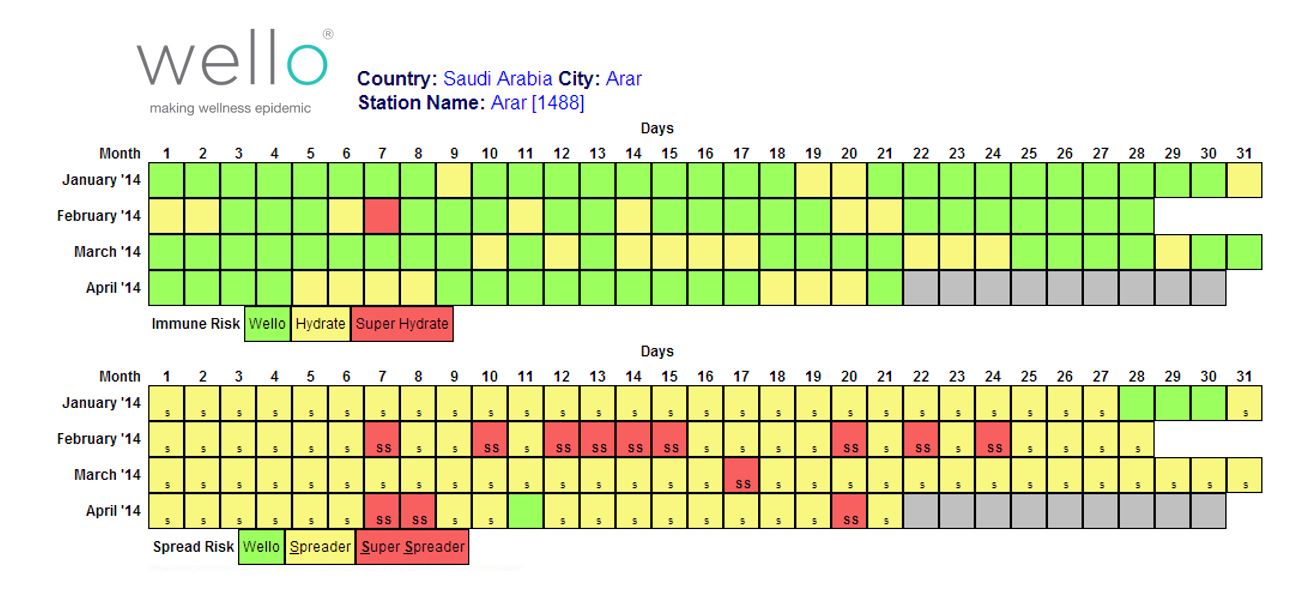CNN, Time and other news sources are reporting the spread of the MERS virus is on the rise. MERS is similar to the SARs virus that hit Asia in 2003. So far 257 cases have been reported including 13 new cases reported today, April 21. At least 76 people have died as a result of the virus. The number of cases reported in April has increased by 20%.
MERS behaves like a cold virus by attacking the respiratory system. Flu like systems can result in pneumonia and kidney failure.
Because of the limited number of cases, health officials are not sure how the virus spreads, but they stress the same precautions with flu and other viruses. At Wello, we study and report on the humidity or moisture content of the indoor conditions. These indoor weather conditions are the leading indicator of increased infection susceptibility and infection spread risk.
The incubation period for MERS is believed to be 14 days, but the variability is unknown due to the low number of cases. Both April 7th and 8th are high spread days and also days of increased susceptibility in Arar, Saudi Arabia. The increased number of cases being reported today directly correlate to the identified risk conditions. WelloWatch pin-points infection risk transmission and susceptibility on a scale red, yellow and green. Red being the most severe for disease spread and human susceptibility and green being the lowest. Monitoring the data for early signs of infection spread risk is critical.
Below is a 3 month report pulled directly from WelloWatch. As you can see in the graphic, April 7th and 8th align perfectly with spread days reflecting super spread days on 4 susceptible days in a row for April. The use of WelloWatch along with temperature monitoring and reporting of WelloStation will eliminate the spread of MERS.

